The LED lights are off but the party isn’t over
How to continue doing your part after Energy Efficiency Day
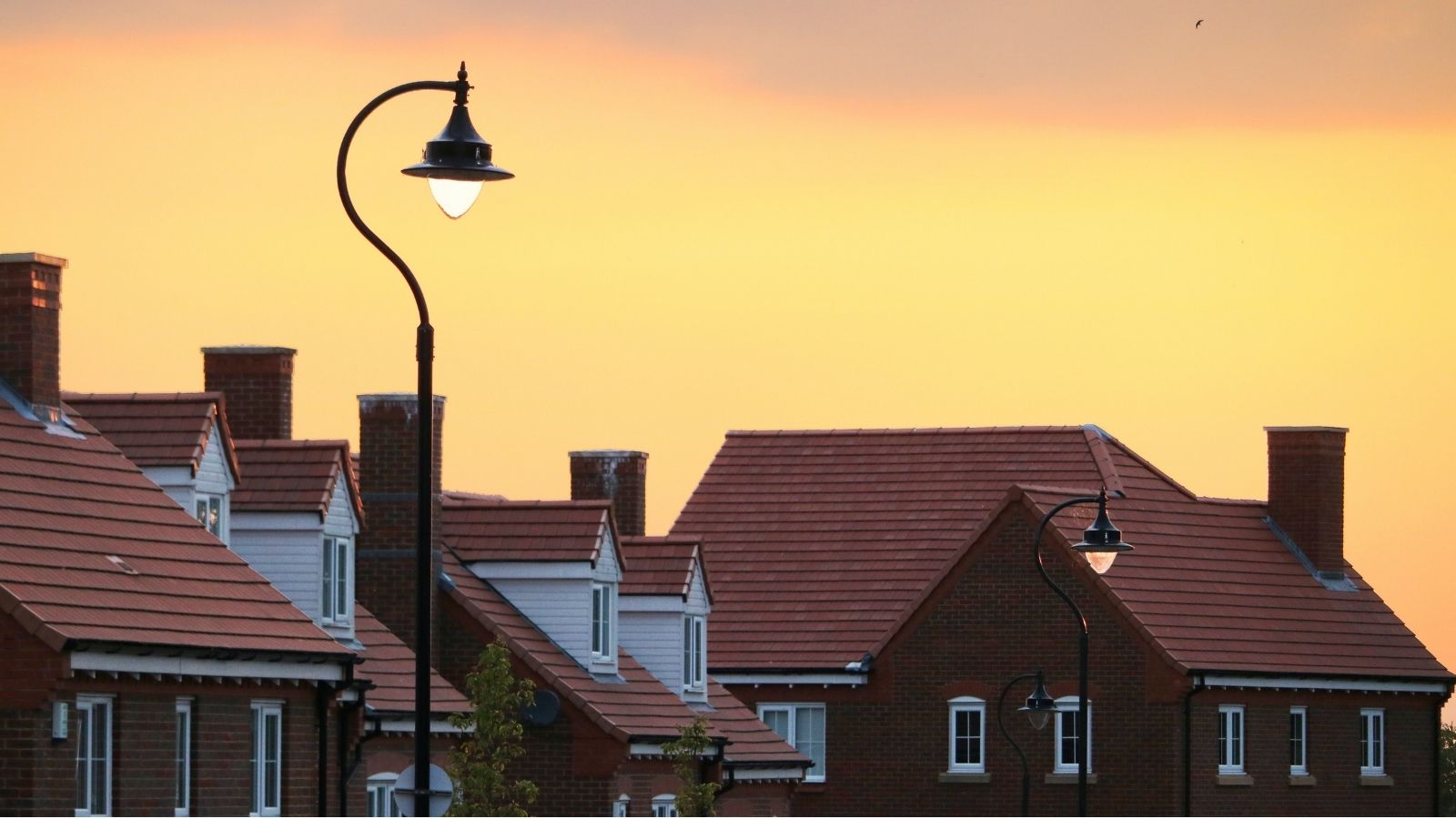
Part of what makes climate change so daunting is how hard it feels to make an impact on an individual level. I want to play a meaningful part in the transition to clean energy, but building a windmill in my backyard isn’t a viable option. I don’t own a home where I could install solar panels or have access to deep source geothermal energy. However, one thing I can do is make sure that I use energy as carefully as possible and find ways to eliminate wasting it in my life. That’s why I love Energy Efficiency Day.
Energy Efficiency Day is a social media day of action that takes place annually in October. It brings together like-minded advocates, companies, government agencies, utilities and more to celebrate energy efficiency’s benefits.
There are two key ways to get involved in the event. The first is to solicit proclamations from elected officials, asking them to formally recognize Energy Efficiency Day in their jurisdiction. The second is to be active on social media and use the official hashtag — this year’s was #EEDay2020 — to engage with other participants and share articles, blogs posts and additional tools and resources.
This year, not only did 41 universities and various levels (state, county, and city) of governments sign on for the event, but the U.S. Senate also passed a resolution (Res. 740) that officially designated Oct. 7, 2020, as Energy Efficiency Day. At Environment America, we secured proclamations from two of our Mayors for Solar Energy — Mayor Rex Parris of Lancaster, Calif., and Mayor Debra March of Henderson, Nev. Below you can see a photograph of Mayor March signing her Energy Efficiency Day Proclamation.
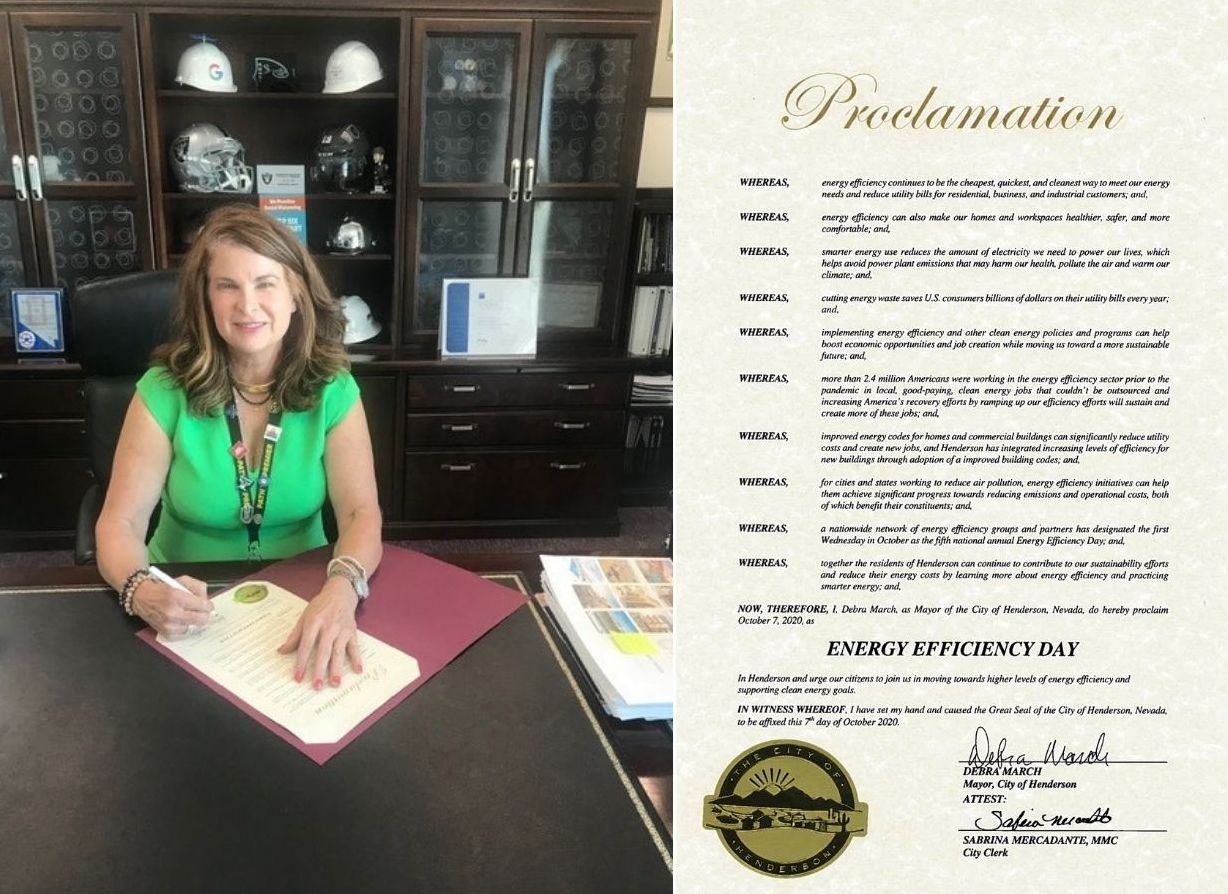
Mayor Debra March of Henderson, Nev., signing a proclamation making Oct. 7, 2020, Energy Efficiency Day.
Proclamations are generally made leading up to Energy Efficiency Day, and the event itself is driven primarily by interaction on social media. Hundred of people and organizations used this year’s #EEDay2020 hashtag to tweet about energy efficiency, including elected officials such as New Hampshire’s U.S. Sen. Jeanne Shaheen. In addition, cities like West Palm Beach, Fla., and such higher education groups as Arizona State University’s sustainability program also joined the effort.
While the issue is serious, the event always offers a bit of whimsy thanks to a creative theme that is part of the annual day. This year’s theme was energy efficient books, and sprinkled between posts with energy stats and tips, were clever puns and fun faux book titles. Ever the witty crowd, energy efficiency supporters came up with a range of titles like Lime Energy’s Grid Expectations, Efficiency Canada’s The Fault in our Infrastructure, and Advanced Energy Economy’s If You Give a House an Audit.
Some of our own page-turners included James and the Giant Lightbulb, Weatherization Heights, and The Solar Express. We also put together a tiny library with a long list of punny titles like Gulliver’s Zero Carbon Travels and 1984 Reasons to Cut Energy Waste.
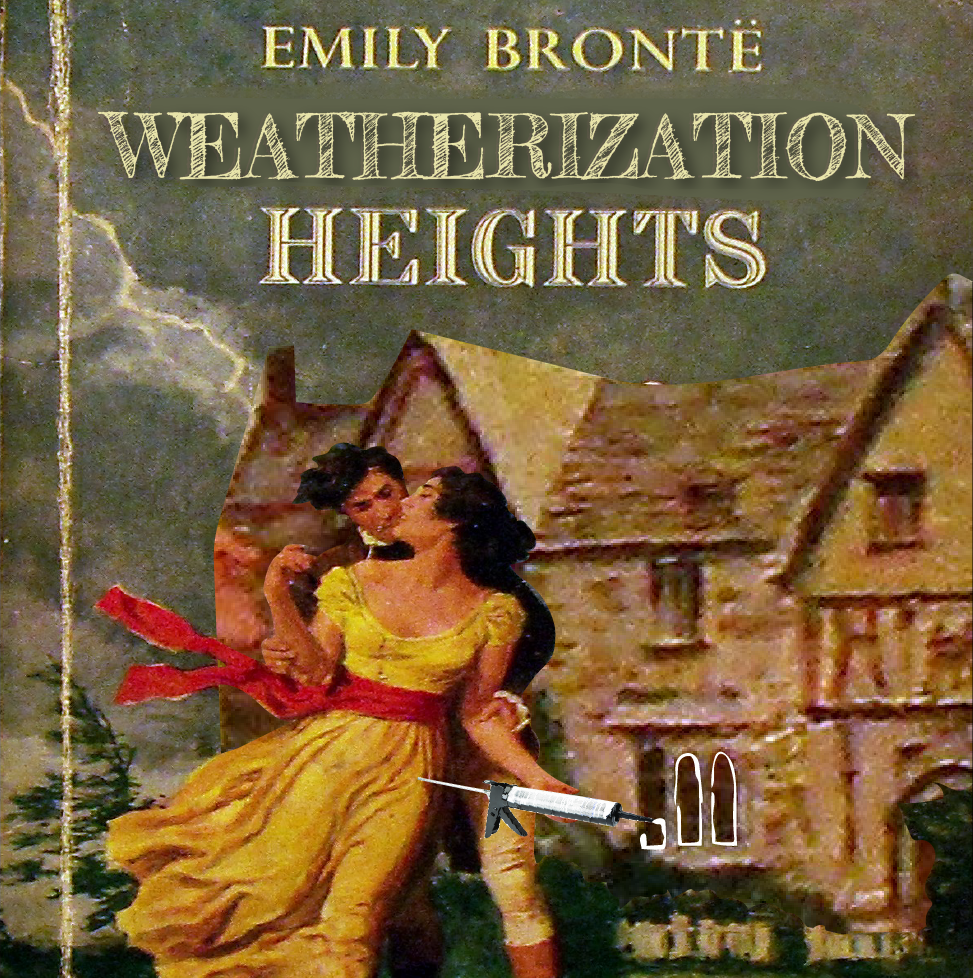
Emily Bronte’s unpublished romance novel Weatherization Heights tells the tale of Catherine and Heathcliff as they fall in love with their energy efficient home.
Aside from being a chance to geek out over energy puns, Energy Efficiency Day is important because it creates excitement around a practical way to save energy, reduce water use and lower greenhouse gas emissions. The celebration makes one fact clear: Energy efficiency is a win-win on all fronts. It can help save the planet while keeping consumers’ money in their pockets.
While Energy Efficiency Day is a great opportunity to put this important clean energy tactic in the limelight, remember that when the day ends, it doesn’t mean the party is over.
There’s a whole list of other small actions we can take to reduce energy waste in our daily lives. They can be as simple as unplugging a phone charger that isn’t being used or as committed as getting an energy audit to find potential sources of energy loss in your home. There are a myriad of ways to be more energy efficient that can be found in our Citizen’s Guide to Reducing Energy Waste.
But beyond those individual actions we must remember that striving to live in a truly energy efficient world also requires much more. It means supporting policies to improve building codes so that all new buildings are constructed to meet zero net energy. It also means advocating for appliance standards to ensure that all appliances and plumbing fixtures on the market are using energy as efficiently as possible.
Conserving energy is not always the sexiest call to action, but it is an essential part of the equation in the transition to 100 percent renewable energy. Energy Efficiency Day reminds us that if we want to make this systemic change, we need to lower energy demand by being more efficient and reducing the amount of energy we use. It reminds us that there’s a whole world to imagine in which we use our energy less wastefully. Most importantly, it reminds us to embrace the cleanest form of energy we have access to — the energy we never even use in the first place.
Topics
Authors
Brynn Furey
Find Out More

Advocates urge action on appliance efficiency
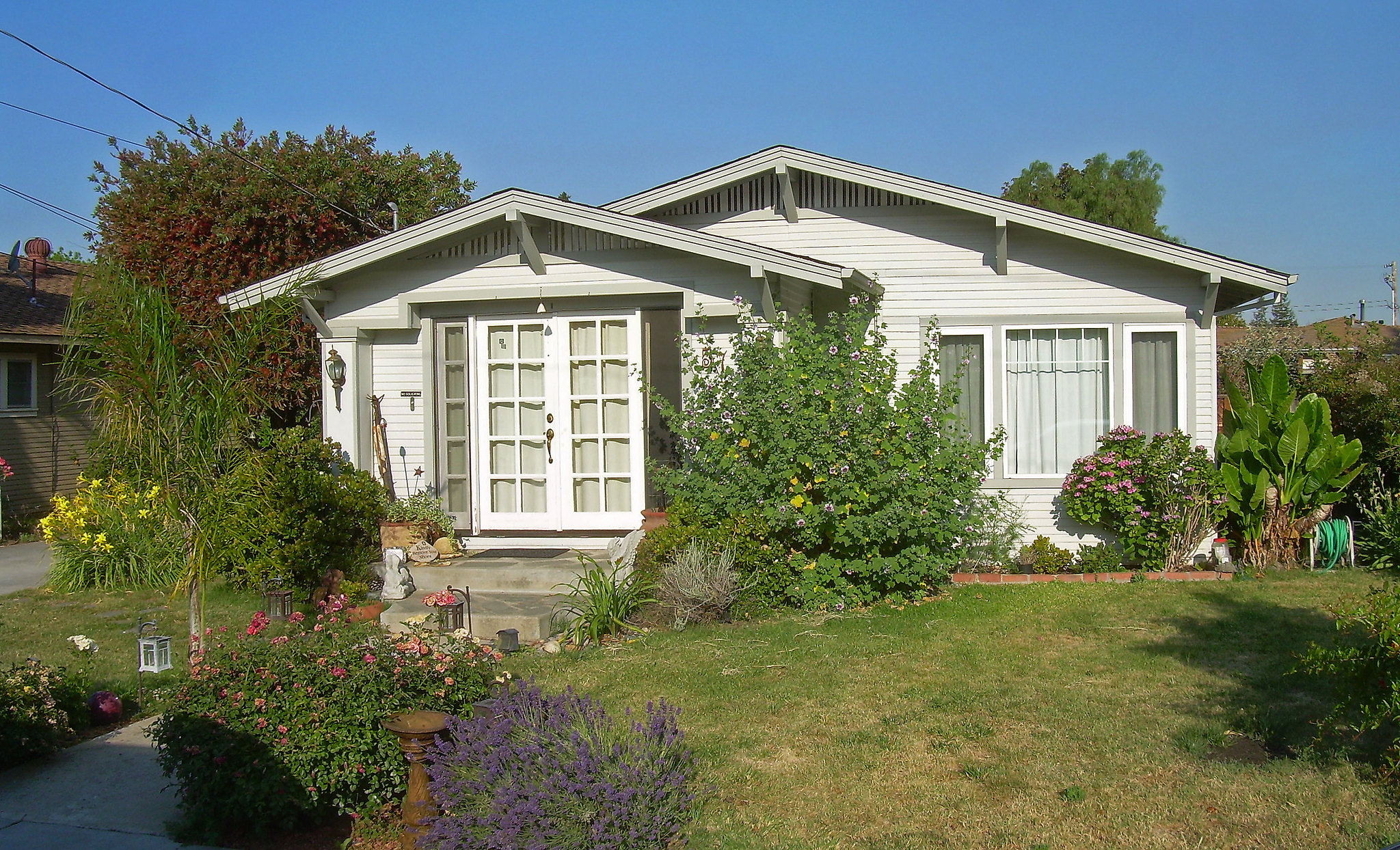
Energy-efficient windows and doors: How federal tax credits can help you install them
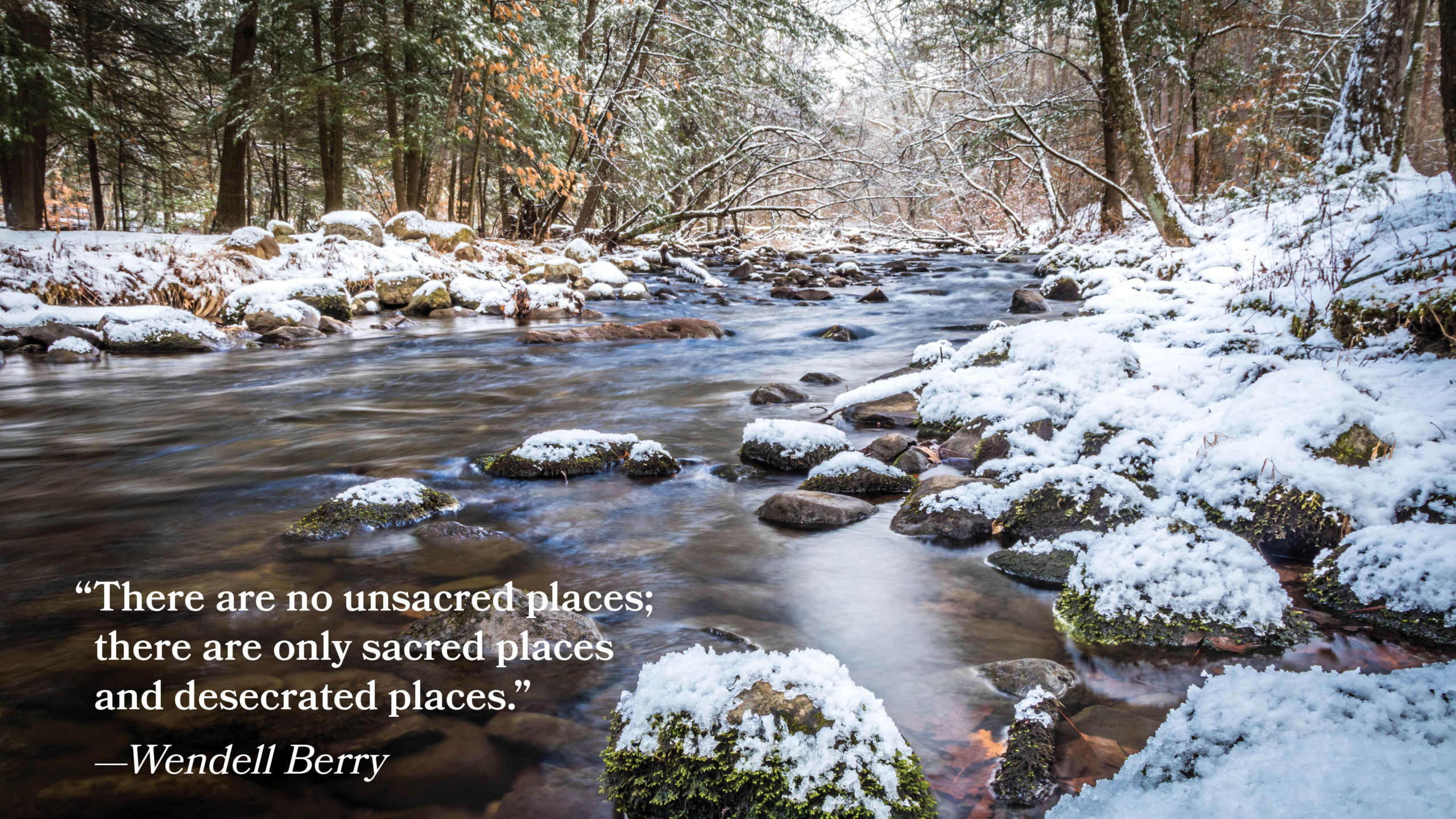
Five things to toast this holiday season



